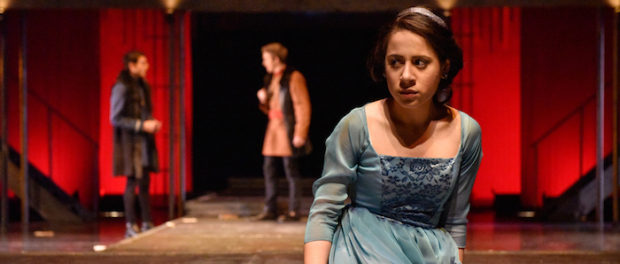Sex in MTL: About Sex Education
As I previously mentioned in a past article, it has been almost 10 years here in Quebec since sex education has been a part of the high school curriculums. That being said, those who had the chance to attend these courses were given minimum education on the subject; nowhere near enough information about their bodies and sexuality. Sadly, some may have also noticed that those classes were very sexist, hetero-centered and focused on genitalia (mostly male) rather than on sex as a complex and multifaceted activity. In the next few years sex education may return to schools, so here are the different elements that need a thorough rethinking if we want future generations to have a healthy sexuality.
Up until the last year that sex education was part of school programs in Quebec, children in our province were learning the basics about sexuality in a very sexist and patriarchal manner. As you may have noticed if you were part of the program, sex was summarized as penetration of the penis in the vagina. Pleasure was addressed, but mostly for men. Intercourse is over when the man ejaculates. As I said in another article, penetration is an option but it’s not representative of sex as a whole. Plus, centering on male ejaculation contributes to the very real orgasm gap; men have three orgasms for every one that a woman enjoys, and only 57% of women orgasm during all or most of their sexual encounters versus over 80% of men. Women have the right to pleasure (although pleasure doesn’t have to include orgasm) as much as men do, and our education system sadly doesn’t help them to feel comfortable in their bodies and about their sexuality. Female orgasm is almost never addressed, and forget learning about female ejaculation!
Another problem, maybe more subtle, is that we often tend to use the word vagina instead of vulva to talk about the female genitalia. It’s problematic because the vagina is the internal organ of the vulva, whose purpose is to be penetrated by the penis and to give birth. Of course, there is also multiple nerve endings inside the vagina, so pleasure can be felt with penetration or stimulation of this part. But the main pleasure organ of the vulva is the clitoris, another concept kept quiet in most sex education classes. The clitoris is actually bigger than most people think; it spreads in a shape of a wishbone, and the more sensitive part is the one peeking in the outside world, protected by its little hood. Since the word vulva includes the vagina, but also the labia, the urethra, and the clitoris, it’s better to use that word instead of vagina, whose function focusses on penetration and giving birth. The word penis already includes all the possible functions of the organ, so why exclude the main female pleasure organ in our vocabulary? In doing so, we forget to teach young girls about their pleasure; how can they healthily discover their own body with a sexist education? To that end, we can also see a problem with genitalia focused teaching; sexuality should be viewed as a complex activity that involves the whole body and mind, and not just a simple contact between people’s genitalia.
Another problem with sex education is heteronormativity. Although we can hope that when those classes come back (if they do), homosexuality, bisexuality, pansexuality, asexuality and transsexuality will all be part of the curriculum, we have to admit that for now, those subjects are rarely discussed with children and teenagers. To date, sex education classes focus on a heterosexual view of intercourse and relationships. Since high school is a time when we start to forge our identity, including our sexual identity, it’s important that we learn about different ways of expressing and identifying ourselves. Heterosexuality is not the norm, but only what society implies as the norm.
The last thing I want to talk about is consent. When I had my sex education classes, consent was never addressed, even though it should be the main topic of discussion! Girls grow up thinking they owe sex, and boys grow up being sure that they are intended to it. No means maybe and silence means yes. Teaching all children that without an actual yes there is no consent, whatever gender you are, and that sleeping or drunk people cannot give consent should be the first things we do when we talk about sexuality. Consent is not just a part of the discussion, it’s the most important part of it, because without it, we tell teenagers that rape is ok.
If parents are not ready to address all these aspects about sexuality, teachers have to do it. But a proper sex education program has to be put in place in order to raise our children to have a healthy sex life.
Have a question about sex? Leave it in the comments below (you can comment as anonymous) or write to Ariane at






